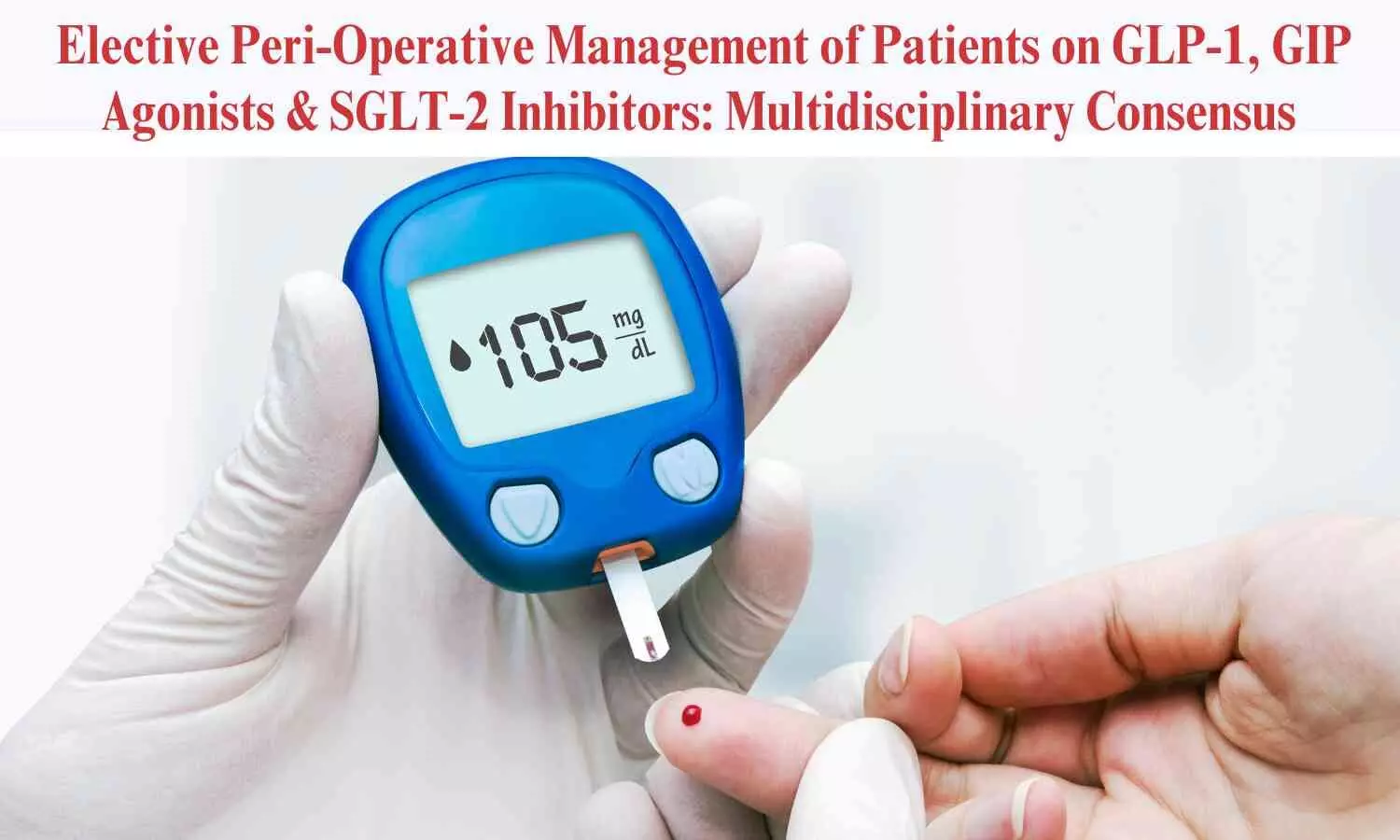Elective Peri-Operative Management of Patients on GLP-1, GIP Agonists & SGLT-2 Inhibitors: Multidisciplinary Consensus Released

UK: A recent consensus statement from leading UK medical organizations—including the Association of Anaesthetists, the Association of British Clinical Diabetologists, the British Obesity and Metabolic Surgery Society, the Centre for Perioperative Care, the Joint British Diabetes Societies for Inpatient Care, the Royal College of Anaesthetists, the Society for Obesity and Bariatric Anaesthesia, and the UK Clinical Pharmacy Association—provides updated guidance on the perioperative management of patients using glucagon-like peptide-1 receptor agonists, dual glucose-dependent insulinotropic peptide receptor agonists, and sodium-glucose cotransporter-2 inhibitors. The statement underscores the importance of shared decision-making to optimize patient safety throughout the perioperative period.
New recommendations published in the Association of Anaesthetists by Kariem El-Boghdadly et. al. emphasized the importance of shared decision-making in managing pulmonary aspiration risks for patients on glucagon-like peptide-1 (GLP-1) and glucose-dependent insulinotropic peptide (GIP) receptor agonists during the peri-operative period.
Recommendations for the peri-operative management of patients taking GLP-1 RA & Dual GIP/GLP RA include:
- Perioperative management of patients taking GLP-1 receptor agonists and GIP should include discussing pulmonary aspiration risks and mitigation strategies through shared decision-making.
- Patients should continue these medications throughout the peri-operative period, adhere to fasting guidelines, and avoid relying solely on upper gastrointestinal symptoms to determine gastric content.
- Experts recommend considering regional anaesthesia as the primary technique when appropriate and using point-of-care gastric ultrasound before induction to assess aspiration risk.
- Individualized pulmonary aspiration risk assessment should factor in drug use, patient condition, and procedural elements.
- To minimize aspiration risks during anaesthesia, strategies include administering prokinetics, using tracheal tubes, modified rapid sequence intubation, head-up positioning, gastric tube use for stomach emptying, and awake extubation.
These measures aim to enhance peri-operative safety and optimize airway management in patients on GLP-1 receptor agonists and GIP medications.
Recommendations for the peri-operative management of patients taking SGLT2i
- The consensus also advises peri-operative management for patients on sodium-glucose cotransporter-2 (SGLT-2) inhibitors to reduce the risk of ketoacidosis.
- Patients should discuss risk mitigation strategies through shared decision-making and stop SGLT-2 inhibitors the day before and on surgery day.
- Fasting guidelines must be followed, avoiding prolonged starvation. Post-surgery, patients discharged the same day should restart the medication once eating and drinking normally (24–48 hours), while hospitalized patients should restart it when capillary ketones are <0.6 mmol/L.
- Those on very low-energy diets for surgery should stop SGLT-2 inhibitors at diet initiation. Written sick-day rules should be provided pre- and post-surgery.
- With the increasing use of GLP-1 receptor agonists, GIP receptor agonists, and SGLT-2 inhibitors in peri-operative care, concerns over aspiration and euglycemic ketoacidosis have risen.
The statement was developed through a collaborative effort involving surgeons, anaesthetists, physicians, pharmacists, and individuals with lived experience relevant to peri-operative care. To ensure evidence-based recommendations, the expert panel conducted a directed literature review followed by a rigorous three-round modified Delphi process to evaluate and finalize guidelines. This structured approach aimed to establish clear, practical recommendations for managing patients on GLP-1 receptor agonists, GIP receptor agonists, and SGLT-2 inhibitors during the peri-operative period.
In the absence of extensive clinical evidence, this multidisciplinary consensus statement serves as a vital guideline to enhance peri-operative safety for patients taking GLP-1 receptor agonists, GIP receptor agonists, and SGLT-2 inhibitors. By emphasizing shared decision-making and individualized risk assessment, the recommendations provide a pragmatic framework for clinicians to optimize patient outcomes while mitigating potential peri-operative complications. As further research emerges, these guidelines may evolve to ensure the highest standards of peri-operative care.
Reference:
Source: El-Boghdadly K, Dhesi J, Fabb P, Levy N, Lobo DN, McKechnie A, Mustafa O, Newland-Jones P, Patel A, Pournaras DJ, Clare K, Dhatariya K. Elective peri-operative management of adults taking glucagon-like peptide-1 receptor agonists, glucose-dependent insulinotropic peptide agonists and sodium-glucose cotransporter-2 inhibitors: a multidisciplinary consensus statement: A consensus statement from the Association of Anaesthetists, Association of British Clinical Diabetologists, British Obesity and Metabolic Surgery Society, Centre for Perioperative Care, Joint British Diabetes Societies for Inpatient Care, Royal College of Anaesthetists, Society for Obesity and Bariatric Anaesthesia and UK Clinical Pharmacy Association. Anaesthesia. 2025 Jan 9. doi: 10.1111/anae.16541. Epub ahead of print. PMID: 39781571.
